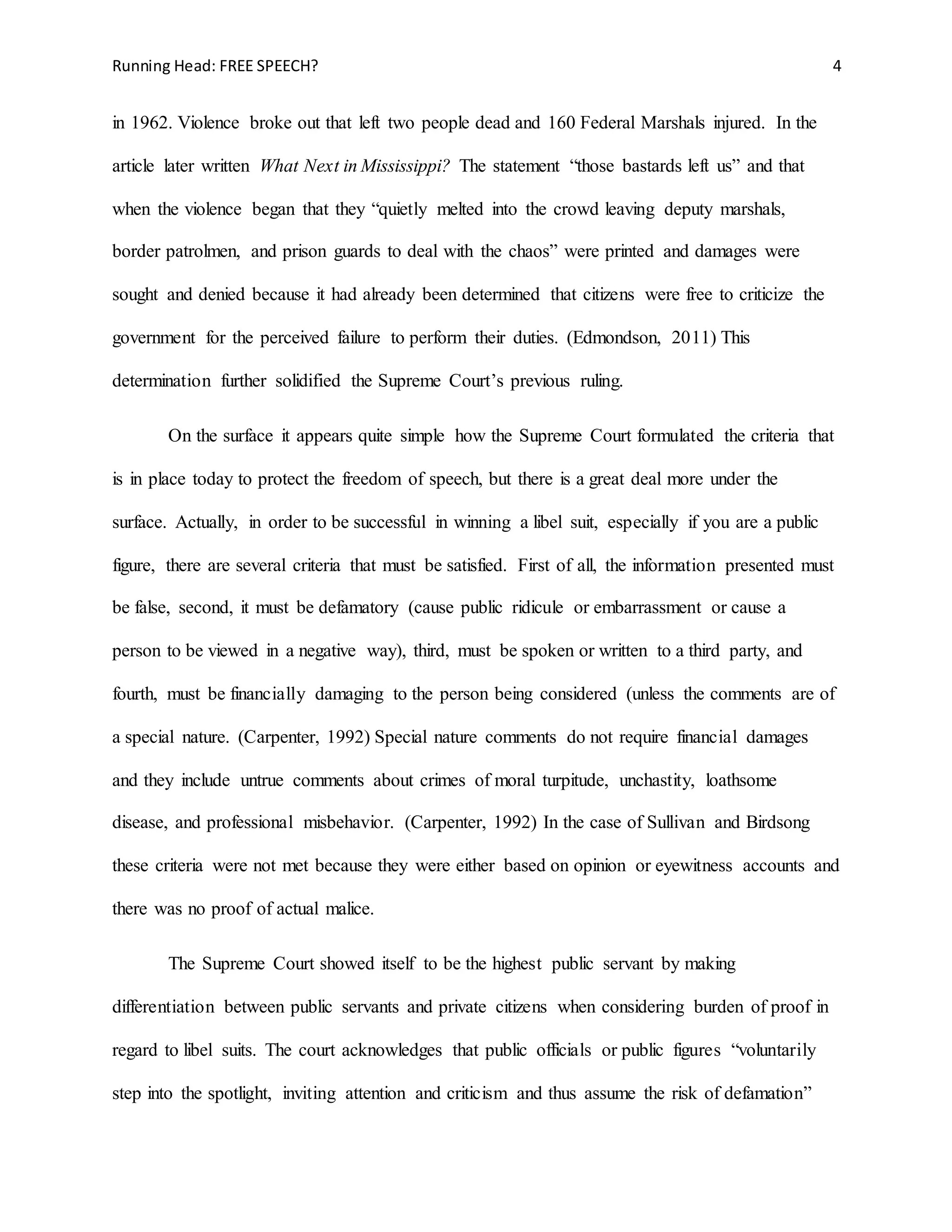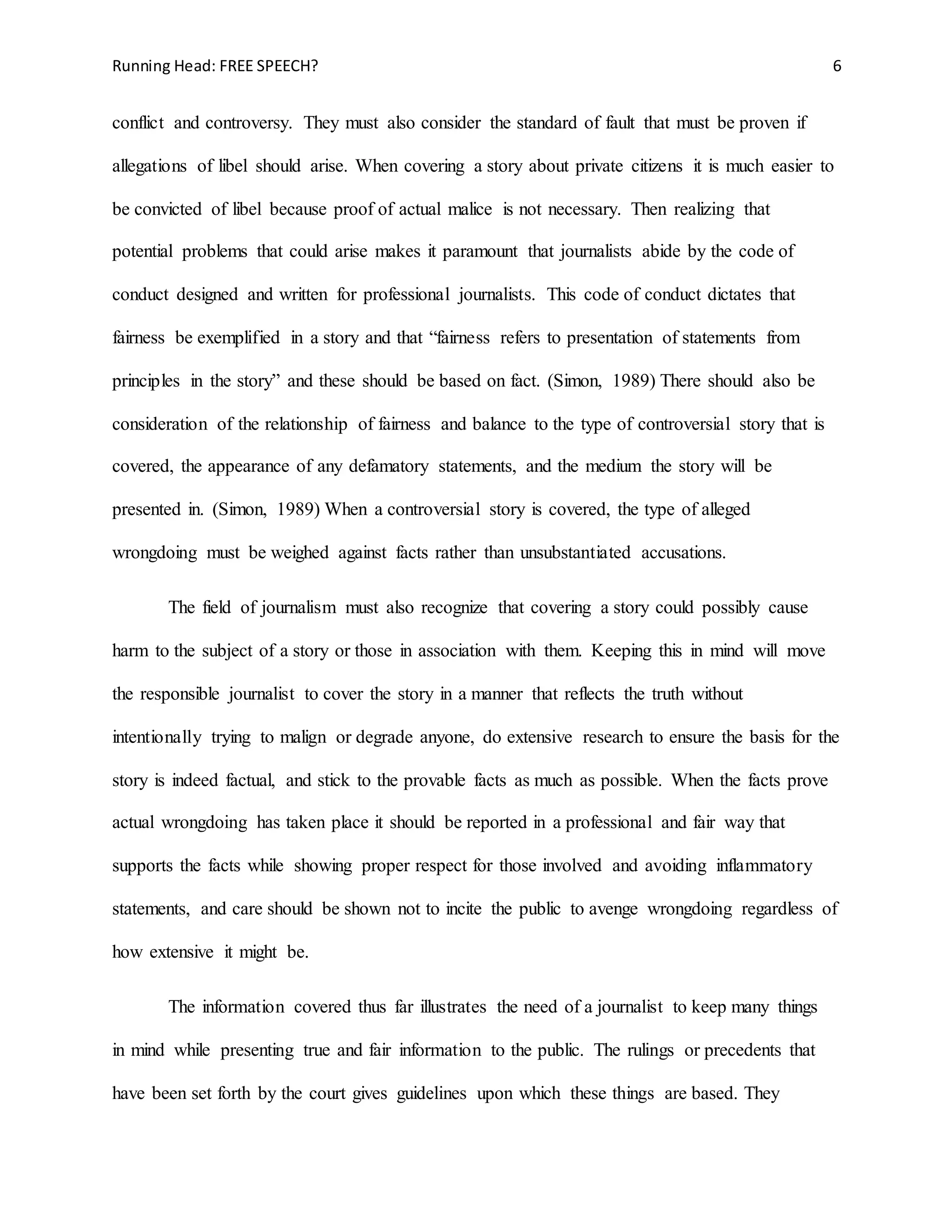This document discusses landmark Supreme Court cases that helped define what types of speech are protected by the First Amendment. It focuses on New York Times Co. v. Sullivan, which established that public officials must prove "actual malice" to win a libel suit over criticisms of their official conduct. The document also discusses Birdsong v. Curtis Publishing Co., which further confirmed citizens' rights to criticize government failures. These cases helped establish criteria for determining libel and differentiated protections for public and private figures. The document stresses the importance of journalists presenting information truthfully, accurately, and without malicious intent while avoiding harm.











